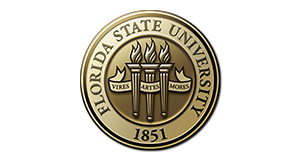Florida State University Search
EH&S Chemical Inventory- Laying the Groundwork
07/02/2025
Florida State University Environmental Health & Safety (EH&S) promotes a safe and healthy environment for students, faculty, staff, and the community by managing hazardous waste, conducting environmental remediation, and implementing safety procedures. A significant component of this charge is risk mitigation, exposure management, and safe handling of chemicals.
In 2018, EH&S facilitated an audit that identified gaps in the chemical inventory system. The audit provided recommendations for a campus-wide chemical inventory to catalog chemical materials currently in use or regularly ordered in over 500 labs and research spaces on FSU’s main campus, satellite campuses, the FSU Marine Lab, and by FSU Facilities.
What chemicals are included in the campus-wide inventory? Any substances that pose a hazard to individuals or environments, such as flammable, toxic, or corrosive chemicals, are considered. These chemicals are used not only for academic and research purposes but also for general campus operations.
Joel M. Smith, PhD, Assistant Professor in the Department of Chemistry and Biochemistry, visited a laboratory with Environmental Health and Safety Chemical Inventory Management officers as part of a group collaboration process.
Chemical Inventory Management Officers Brooke Barnes and Kelly Carnahan joined Environmental Health & Safety in late 2024 and are leading the charge to implement a comprehensive, self-sustaining campus-wide chemical inventory using CampusOptics, a higher education tracking system for EH&S directives, including chemical inventory and hazardous waste.
Before the inventory work could commence, Barnes and Carnahan began hosting working groups in February 2025 with academic department chairs, principal investigators, and other stakeholders to create a chemical plan that meets the needs of all user groups. By spending extensive time with different groups, they can determine realistic timelines for a manual lab cleanout and chemical inventory, as well as the state and federal regulations each group is responsible for maintaining.
"The goal is a clean slate and self-sufficiency," Carnahan said. "By cleaning house and completing an inventory of what is remaining, developing training, and launching the program."
Smith provides examples of materials slated for the inventory process in the Chemistry Sciences Laboratory (CSL) building.
Carnahan and Barnes plan to utilize the tools available in CampusOptics to promote collaboration across the university. Their goal is to enhance communication between sharing and repurposing chemicals among laboratories. This initiative aims to reduce costs and minimize hazards associated with chemical management. They aim to reduce expenses, mitigate risks, and enhance research funding by streamlining this process.
Safety is the primary goal of the chemical inventory process for staff who regularly interact with chemicals, as well as those who do so occasionally, such as emergency response and custodial staff. Ensuring everyone knows what chemicals are present in the lab space creates a culture of transparency and lowers risks. EH&S will incorporate routine online and in-person training for CampusOptics and general chemical management into the program. The platform utilizes a user-friendly mobile application, ensuring easy access and timely updates to inventory.
The upcoming steps for the chemical inventory team before a comprehensive launch of the new platform include continuing to build on the pilot program’s buy-in and standard operating procedures with various campus working and test groups. In addition to working groups, lab walk-throughs, and cleanouts before the launch of the new program, an amnesty day is also planned for units to dispose of any hazardous or unwanted chemicals. EH&S will then be able to start barcoding chemicals across campus and validating the information in CampusOptics.
"Meetings with our test group have been going really well," Barnes said. "They’ve helped us identify how we can better serve FSU communities with our program. Every researcher or building manager who has participated so far has been excited about the shift in safety culture and is looking forward to the changes this program is bringing."
Graduate students Zackary Firestone, Filipe Pernichelle, and Ryan Harbit demonstrate laboratory functions during a working group site visit.
In the long term, EH&S will be responsible for managing the software, conducting annual inspections to verify inventories, and collecting purchasing data to analyze the volume and frequency of chemicals coming on campus. The team will regularly share operational and software updates through working groups, safety committees, and a frequently asked questions (FAQ) section for chemical inventory. On how this will impact EH&S’ relationship with the lifespan of chemicals on campus, Canahan said, "Since EH&S is responsible for tracking chemicals on campus from cradle to grave, we will always be involved."





